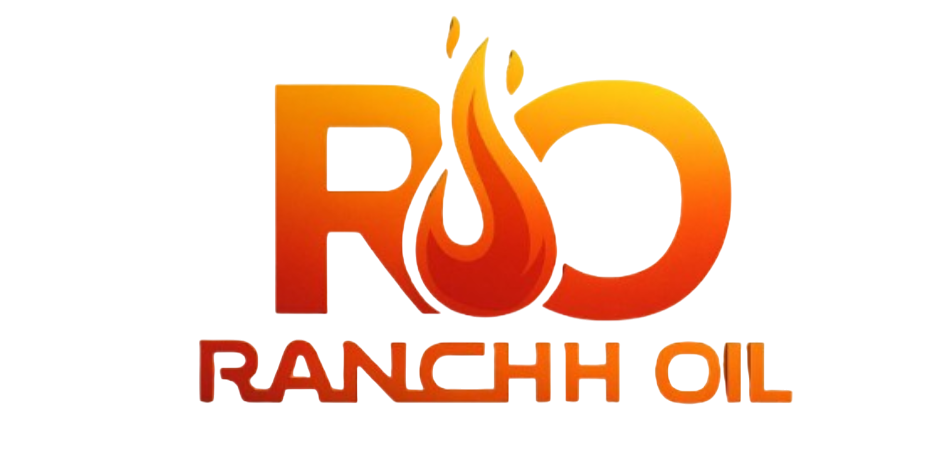- Gas Oil 10ppm
- Gas Oil 1000ppm
- Gas Oil High Sulphur
- Fuel Oil – Virgin Grade (HSFO, VLSFO)
- Naphtha
- Mineral Hydrocarbon Oil
- Industrial Oil
- Used Engine Oil
- Mixed Hydrocarbon Oil
- Recycled Base Oil
- Bitumen
- White spirit
- Furnace Oil
Gas Oil 10ppm
Gas Oil 10ppm is a high-quality, ultra-low sulfur diesel fuel engineered to meet stringent international emission and performance standards. With a sulfur content of only 10 parts per million, this grade offers cleaner combustion, reduced environmental impact and improved engine efficiency.
Ranchh Oil supplies premium Gas Oil 10ppm suitable for a wide range of industrial, commercial and transportation applications. Its low sulfur level ensures excellent compatibility with modern engines and emission-control systems, while delivering reliable ignition, stable performance and reduced maintenance requirements.
We source and supply Gas Oil 10ppm under strict quality control, ensuring consistency, purity and compliance with UAE and global fuel specifications. Whether for heavy machinery, generators, marine operations, bunker supply for ships and vessels or large-scale industrial use, our product offers dependable and efficient fuel performance.

Gas Oil 1000ppm
Gas Oil 1000ppm is a medium-sulfur diesel fuel widely used in industrial, construction and marine applications where robust performance and dependable ignition are essential. With a sulfur content capped at 1000 parts per million, this grade offers strong combustion characteristics, stable power output and suitability for engines that do not require ultra-low sulfur fuel.
Ranchh Oil supplies high-quality Gas Oil 1000ppm sourced from trusted refiners and processed under strict quality guidelines to ensure consistency, purity and reliable performance. This fuel is well suited for generators, heavy equipment, construction machinery, marine operations, bunker supply for ships and vessels and other industrial uses requiring durable and cost-effective diesel.
Our supply chain ensures timely delivery, quality assurance and compliance with regional specifications, making Ranchh Oil a dependable partner for all your Gas Oil 1000ppm requirements.

Gas Oil High Sulphur
Gas Oil 1000ppm is a medium-sulfur diesel fuel widely used in industrial, construction and marine applications where robust performance and dependable ignition are essential. With a sulfur content capped at 1000 parts per million, this grade offers strong combustion characteristics, stable power output and suitability for engines that do not require ultra-low sulfur fuel.
Ranchh Oil supplies high-quality Gas Oil 1000ppm sourced from trusted refiners and processed under strict quality guidelines to ensure consistency, purity and reliable performance. This fuel is well suited for generators, heavy equipment, construction machinery, marine operations and other industrial uses requiring durable and cost-effective diesel.
Our supply chain ensures timely delivery, quality assurance and compliance with regional specifications, making Ranchh Oil a dependable partner for all your Gas Oil 1000ppm requirements.

Fuel Oil – Virgin Grade (HSFO, VLSFO)
Virgin Grade Fuel Oil encompasses High Sulphur Fuel Oil (HSFO) and Very Low Sulphur Fuel Oil (VLSFO), both produced directly from crude distillation without undergoing secondary processing or cracking. These grades are widely used in marine, industrial and power-generation applications where consistent performance, thermal efficiency and stable combustion are essential.
HSFO (High Sulphur Fuel Oil) offers strong calorific value and is suitable for engines, boilers and industrial systems designed to operate with higher sulphur content fuels.
VLSFO (Very Low Sulphur Fuel Oil) is engineered to meet IMO emission standards, providing reduced sulphur emissions while maintaining excellent combustion efficiency for compliant marine vessels and industrial machinery.
Ranchh Oil supplies both HSFO and VLSFO with strict adherence to quality specifications, ensuring reliable viscosity, stability, compatibility and energy output.

Naphtha
Naphtha is a highly versatile, light hydrocarbon mixture produced during crude oil distillation and used extensively as a feedstock in petrochemical manufacturing. It serves as a key raw material for producing gasoline, solvents, cleaning agents and various chemical intermediates.
At Ranchh Oil, we supply high-quality Naphtha suitable for industrial, petrochemical and energy applications. Its strong volatility, clean-burning properties and consistent performance make it ideal for reforming, cracking and other downstream processing requirements.
Our sourcing and quality-control processes ensure reliable specifications, stable composition and timely delivery to meet the needs of refineries, chemical plants and manufacturing industries.

Mineral Hydrocarbon Oil
Mineral Hydrocarbon Oil is a refined petroleum-based product composed of stable saturated hydrocarbons. It is widely used across industrial, automotive and manufacturing sectors due to its excellent lubrication, heat-transfer and insulating properties. Known for its purity, low volatility and consistent performance, this oil serves as a key ingredient in lubricants, process oils, metalworking fluids and various industrial formulations.
Ranchh Oil supplies premium-grade Mineral Hydrocarbon Oil sourced from trusted refiners and produced under strict quality standards. Its reliability, chemical stability and wide application range make it suitable for diverse industrial operations, ensuring smooth performance, reduced wear and long-term equipment protection.
Our efficient supply chain ensures timely delivery and consistent quality for all customer requirements.

Industrial Oil
Industrial Oil is a versatile petroleum-based lubricant designed to support a wide range of mechanical, manufacturing and heavy-duty industrial operations. Known for its strong lubrication properties, oxidation stability and heat resistance, Industrial Oil plays a key role in reducing friction, protecting components and ensuring smooth equipment performance under demanding conditions.
Ranchh Oil supplies high-quality Industrial Oil formulated to meet the operational needs of factories, workshops, construction equipment and industrial machinery. Our products deliver consistent viscosity, enhanced wear protection and reliable performance, making them suitable for hydraulic systems, compressors, gear units, bearings and general mechanical applications.
With strict quality control and efficient supply capabilities, we ensure dependable, on-time delivery for industries across the region.

Used Engine Oil
Any synthetic or petroleum-based oil that has been used is what the term “used oil” suggests. Our lawnmowers, autos, and numerous other devices all function smoothly thanks to oil. However, through routine use, contaminants like dirt, metal scrapings, water, or chemicals can get mixed into the oil, which over time causes the oil to lose its effectiveness. For the task to be completed effectively, virgin or re-refined oil must eventually take the place of this used oil.
Used oil can be re-refined into lubricants, processed into fuel oils, and used as raw materials for the refining and petrochemical industries. Additionally, used oil filters contain reusable scrap metal, which steel producers can reuse as scrap feed.

Mixed Hydrocarbon Oil (MHO – Light and Heavy)
Mixed hydrocarbon oil is a petroleum-based substance with a consistency of 0.79 to 0.82. It is a product that has lower density and low uniformity that is utilized as raw material. It’s a blend of vibrant oils that includes both lighter and heavier oils. They are used as lubricants, fuels, and raw materials for making industrial chemicals, polymers, fibers, rubber, solvents, and explosives.
Used oil can be re-refined into lubricants, processed into fuel oils, and used as raw materials for the refining and petrochemical industries. Additionally, used oil filters contain reusable scrap metal, which steel producers can reuse as scrap feed.

Recycled Base Oil
Recycled Base oil is eco-friendly. It generates lower carbon emissions than virgin base oil. The process of production of virgin base oil is energy intensive. It generates higher emissions of carbon. Rise in focus on sustainability of the environment across the globe is providing significant opportunities to the global recycled base oil market. Rise in investments in research and development of the re-refining process and improvement in the quality of recycled base oil are other major factors driving the global recycled base oil market. Increase in number of automobiles across the globe is also driving the demand for lubricants. Petrochemicals sources are depleting the increasing prices of crude oil are encouraging oil manufacturers to seek new method to re-refine and utilise waste oil.

Bitumen
Bitumen is a low-grade of crude oil which is composed of complex, heavy hydrocarbons. In an oil reservoir, bitumen is a thick, viscous fluid and must be extracted from the ground. When extracting it, a lot of heat and effort must be used to upgrade it to a better product. Although bitumen is hard to extract from the ground, it can bubble naturally to the surface of the Earth in petroleum seeps. These seeps are places where fossil fuels and petroleum products leak out of the Earth instead of being trapped deep below the ground. In these seeps, bitumen, asphalt, and tar bubble up into pools. Additionally, bitumen is the main fossil fuel component of oil sands. When bitumen combines with asphaltines a solid is formed that is useful for paving roads.

White spirit
The most important and main application of white Sprite solvent is in paints and resins industry. Other applications of this material as cleaning solvent, solvent for aerosols, varnishes, washing solvents, asphalt products. White Sprite is one of the most important solvents used in paints and thinners. This chemical can also be used as a paint thinner and due to its heavy composition, it has less volatility than similar materials. This feature increases the drying time of the paint and limits the use in areas with high humidity. This solvent has a lower price than hydrocarbon solvents, so to reduce the price of mixed thinners, it is added to the paint. The use of this chemical is also recommended for people who work long hours with paints due to its low odor.

Furnace Oil

